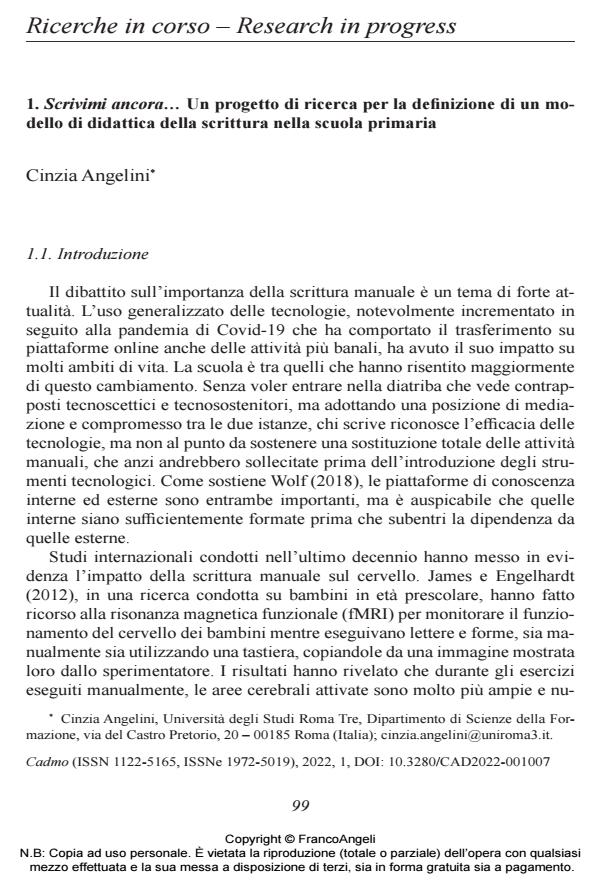Research in progress
Journal title CADMO
Author/s Cinzia Angelini, Andrea Tinterri, Luigi Tinella, Andrea Bosco, Isabella Loiodice, Anna Dipace, Gabriella Agrusti, Valeria Damiani, Alberto Fornasari, Matteo Conte
Publishing Year 2022 Issue 2022/1
Language Italian Pages 25 P. 99-123 File size 244 KB
DOI 10.3280/CAD2022-001007
DOI is like a bar code for intellectual property: to have more infomation
click here
Below, you can see the article first page
If you want to buy this article in PDF format, you can do it, following the instructions to buy download credits

FrancoAngeli is member of Publishers International Linking Association, Inc (PILA), a not-for-profit association which run the CrossRef service enabling links to and from online scholarly content.
1. Scrivimi ancora.. Un progetto di ricerca per la definizione di un modello di didattica della scrittura nella scuola primaria
2. Fostering the resilience of University students in the post-pandemic world: the FOSTER project
3. Increasing professionalism of teacher educators in Kosovo: the capacity building workshop of QATEK project
4. I NEET you. Il ruolo dell’Università nel contrasto del fenomeno dei NEET
- Insegnare e imparare attraverso lo schermo: limiti e potenzialità della DAD Cinzia Angelini, Alberto Fornasari, in CADMO 1/2023 pp.50
DOI: 10.3280/CAD2023-001005
Cinzia Angelini, Andrea Tinterri, Luigi Tinella, Andrea Bosco, Isabella Loiodice, Anna Dipace, Gabriella Agrusti, Valeria Damiani, Alberto Fornasari, Matteo Conte, Ricerche in corso in "CADMO" 1/2022, pp 99-123, DOI: 10.3280/CAD2022-001007